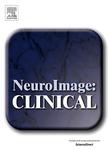版权所有:内蒙古大学图书馆 技术提供:维普资讯• 智图
内蒙古自治区呼和浩特市赛罕区大学西街235号 邮编: 010021

作者机构:Cincinnati Childrens Hosp Med Ctr Dept Pediat Perinatal Inst Cincinnati OH 45229 USA Univ Cincinnati Coll Med Dept Pediat Cincinnati OH 45220 USA Cincinnati Childrens Hosp Med Ctr Pediat Neuroimaging Res Consortium Cincinnati OH 45229 USA Cincinnati Childrens Hosp Med Ctr Dept Radiol Cincinnati OH 45229 USA
出 版 物:《NEUROIMAGE-CLINICAL》 (神经成像:临床)
年 卷 期:2018年第18卷
页 面:290-297页
核心收录:
学科分类:1002[医学-临床医学] 1010[医学-医学技术(可授医学、理学学位)] 10[医学]
基 金:National Institutes of Neurological Disorders and Stroke of NIH [R01-NS094200 R01-NS096037]
主 题:Artificial neural network Stacked sparse autoencoder Support vector machine Very preterm infants Functional MRI Cognitive deficit
摘 要:Investigation of the brain s functional connectome can improve our understanding of how an individual brain s organizational changes influence cognitive function and could result in improved individual risk stratification. Brain connectome studies in adults and older children have shown that abnormal network properties may be useful as discriminative features and have exploited machine learning models for early diagnosis in a variety of neurological conditions. However, analogous studies in neonates are rare and with limited significant findings. In this paper, we propose an artificial neural network (ANN) framework for early prediction of cognitive deficits in very preterm infants based on functional connectome data from resting state fMRI. Specifically, we conducted feature selection via stacked sparse autoencoder and outcome prediction via support vector machine (SVM). The proposed ANN model was unsupervised learned using brain connectome data from 884 subjects in autism brain imaging data exchange database and SVM was cross-validated on 28 very preterm infants (born at 23-31 weeks of gestation and without brain injury;scanned at term-equivalent postmenstrual age). Using 90 regions of interests, we found that the ANN model applied to functional connectome data from very premature infants can predict cognitive outcome at 2 years of corrected age with an accuracy of 70.6% and area under receiver operating characteristic curve of 0.76. We also noted that several frontal lobe and somatosensory regions, significantly contributed to prediction of cognitive deficits 2 years later. Our work can be considered as a proof of concept for utilizing ANN models on functional connectome data to capture the individual variability inherent in the developing brains of preterm infants. The full potential of ANN will be realized and more robust conclusions drawn when applied to much larger neuroimaging datasets, as we plan to do.